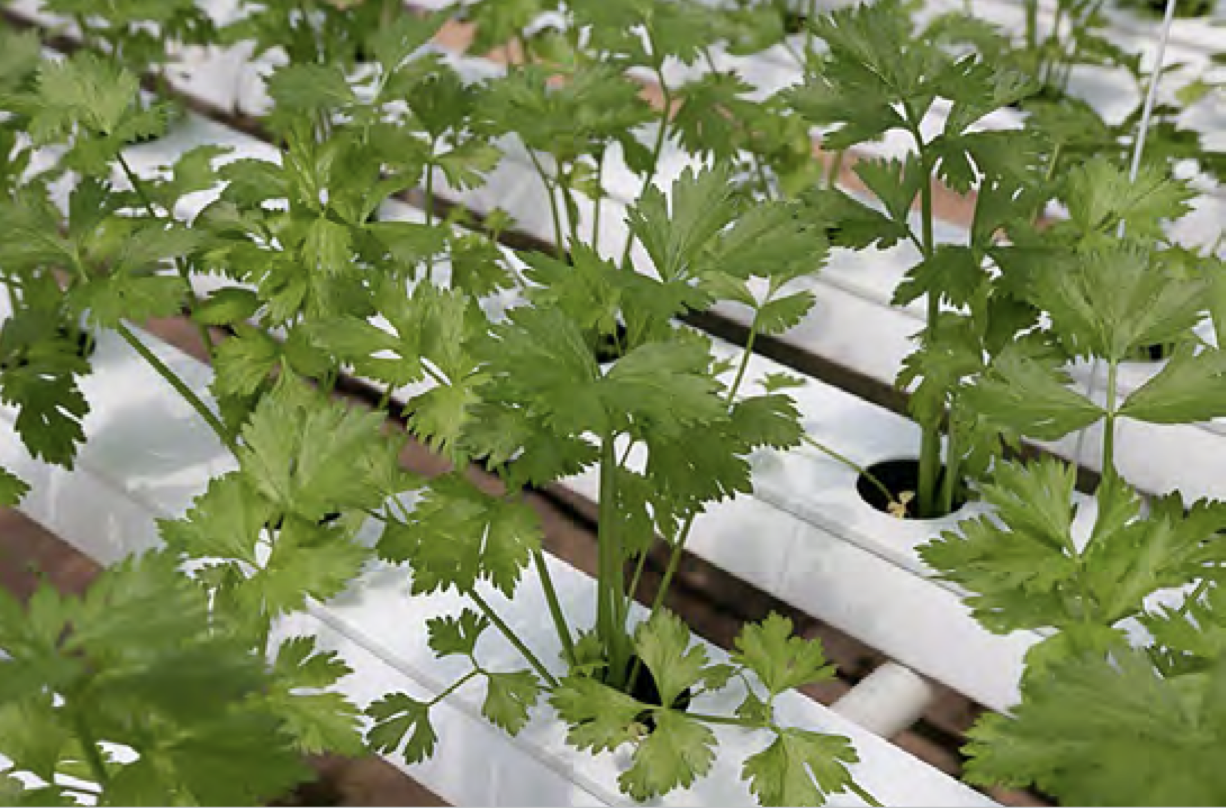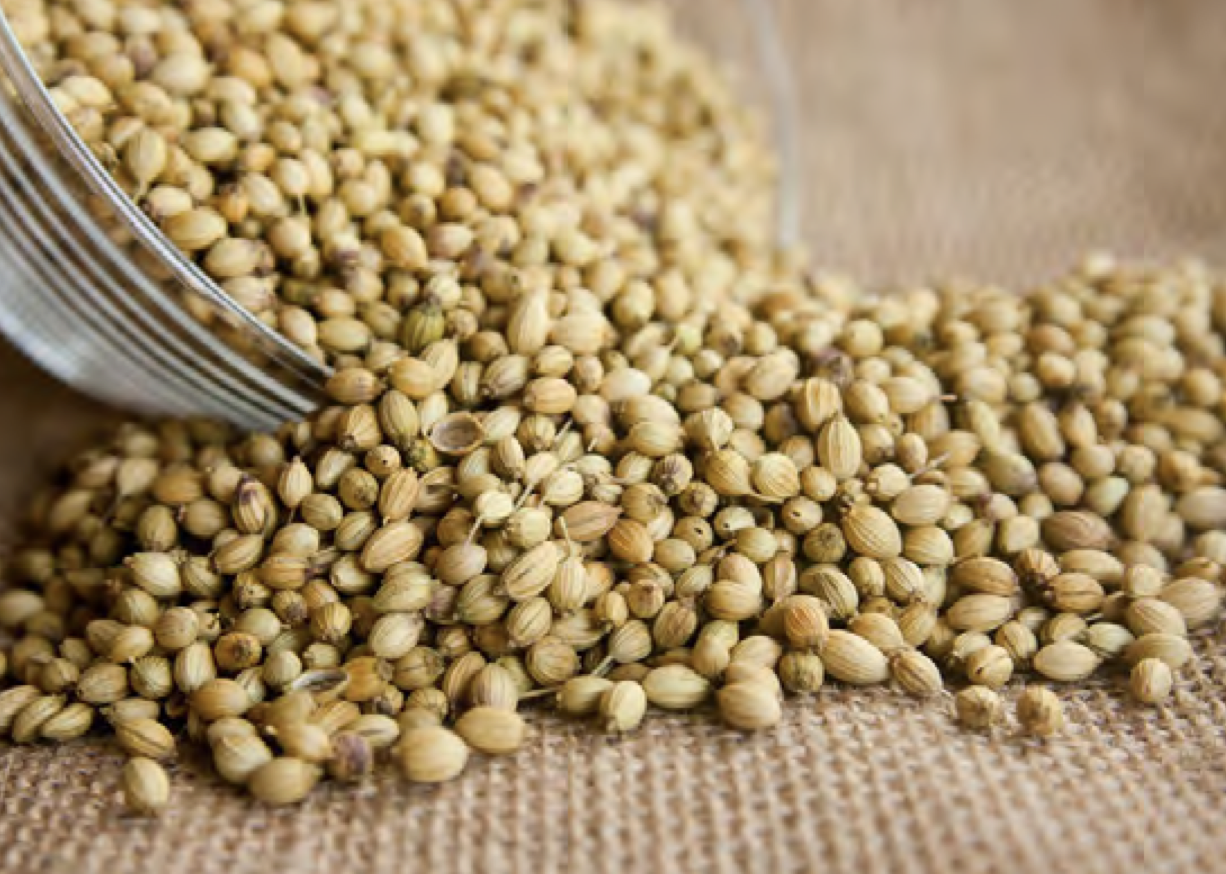
Harris County Master Gardener Shares Tips for Growing Cilantro at Home
by Karen McGowan, Harris County Master Gardener
In the midst of summer 2023, next up in our drought-tolerant Mediterranean herb series is one with a flavor probably one of the most polarizing in the herb world: Cilantro, which is also sometimes referred to as “coriander.” The herb cilantro and the spice coriander are actually from two different parts of the same plant (Coriandrum sativum); cilantro is its leaves, and coriander is its seeds. While the two are often considered exclusive to Mexican and Thai cuisines, cilantro was and continues to be a staple in Mediterranean gardens and kitchens.
Just a glimpse at cilantro is enough to tell that it’s in the same Apiaceae family as carrots and parsley, along with many others, including dill, cumin, chervil, and Queen Anne’s lace. The long, thin stems of cilantro emerge in clumps from one taproot and frequently sprawl out over time. Perched atop each stem are the feathery, fern-like leaves we (some of us) love to munch and mix into any number of delicious dishes, including chopped with onions, tomatoes, and jalapenos for Texans’ beloved pico de gallo. The lower leaves of the plant are a little more rounded out than the top ones and closely resemble parsley. A lightning-fast grower, cilantro reaches up to 2 feet tall and wide.
Native to the Mediterranean and southern Europe, cilantro has long been grown globally. Today, it is produced in almost every country in the world, with Mexico the leader in national production, and California, in states within the U.S. Because cilantro bolts in high heat, it has a very short life span, but this short life can be prolonged by choosing a variety that handles higher tempera- tures without sacrificing flavor. Some favorites include Calypso, Marino, and Santo varieties. On the other hand, some varieties, like Festival cilantro, can handle colder temperatures, ideal for winter growing in zones 8-9.
Cilantro’s entire planting process is mostly based around prolonging the plant’s life before bolting; the herb only takes about a month of growth before harvesting can begin, so you’ll get the most of your plants by planting just after the last frost of spring. In entirely frost-free areas, you may even be able to grow cilantro during the winter! For a continuous harvest, it’s recommended to plant more cilantro every other week (like corn).
Cilantro’s taproot doesn’t allow for easy transplanting, so plan for your cilantro’s first home to be its only home. Sow the seeds directly in the ground or in a medium-sized container. Sow seeds 1/4-1/2 inches deep and 3-4 inches apart. When planting in-ground, don’t be afraid to place them close together. When they grow, the compacted foliage will shade the ground well, keeping the roots happily cool. If you’re late to the planting game or need a more convenient method, many nurseries sell coriander starts (usually very inexpensive). Simply plant cilantro straight into its new home, taking care not to damage the tap- root. While the plant typically prefers full sun, in the afternoon in south Texas summers, some shielding from the sun will create a happier cilantro environment. Water regularly; however, recall that this is a drought-tolerant herb, preferring a drier habitat.

Referring back to the opening comment about cilantro being a polarizing herb: If by chance, the thought of cilantro makes you cringe – you’re not alone. Up to 14% of the population actually has a genetic variation that causes a soapy aftertaste when eating cilantro. However, those with the “soapy” gene can become acclimated to the taste – especially if they grew up eating it as part of their culture’s cuisine. If you just can’t stand it though, there are some pretty good cilantro substitutes, including Vietnamese cilantro and papalo.
A personal confession: I was part of that “up to 14% of the population,” and when I first tried cilantro, it was definitely reminiscent of the taste sensation of a missed soapy section of your hand that made contact with your mouth – not amazing. For whatever reason, though, I powered through and eventually acclimated to the taste; now cilantro is one of my absolute go-to herbs (I frequently have some in a water vase in my fridge). Through experience in using it I did discover that, whenever cooking with cilantro, it should be added in the last 1-2 minutes, because any extended cooking period accents the soapy taste. This is definitely a fresh herb that should be used as a garnish or cooked very lightly (whether in heat or with acid, such as with tomatoes or vinegar). Coriander seeds are particularly wonderful, however, when well-toasted.
Here’s to adventures in your palate and your garden!
Source: Harris County Master Gardeners Urban Dirt Newsletter (July 2023 Edition)
About Urban Dirt
Each month, Harris County Master Gardeners publishes an informative, resourceful newsletter entitled "Urban Dirt". This article was derived from the July 2023 edition. To read the July 2023 edition of this newsletter, click the button below.








